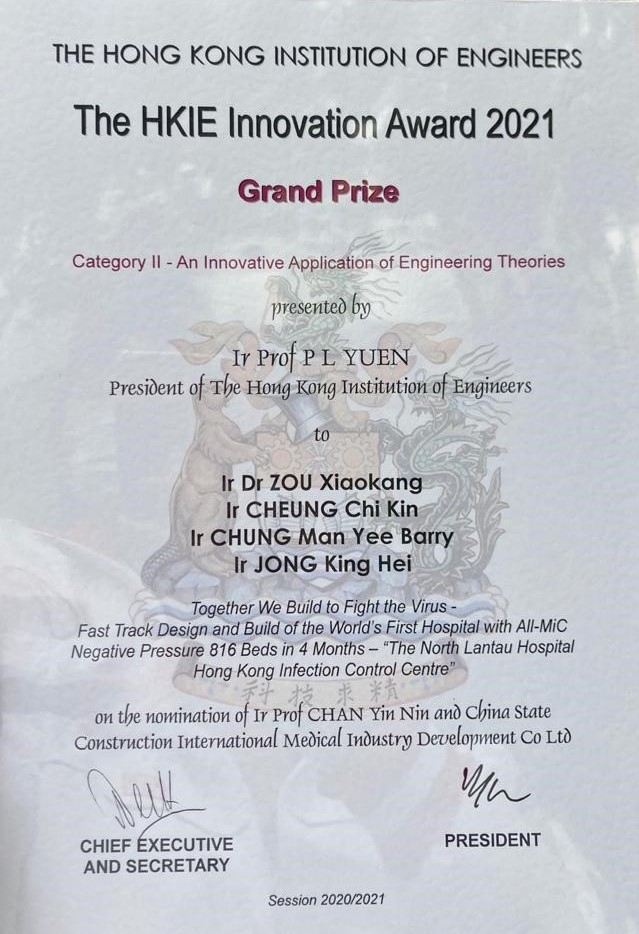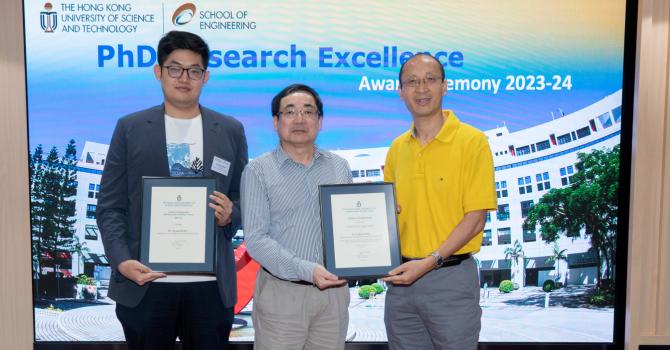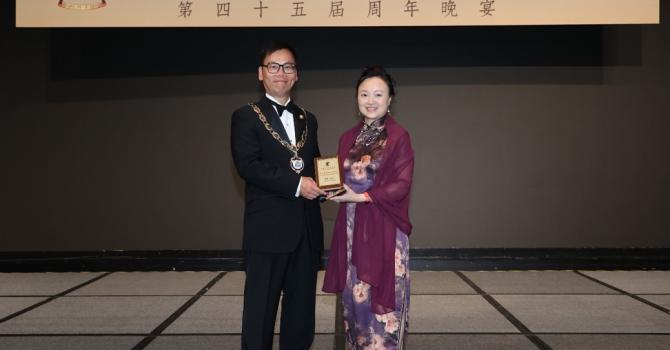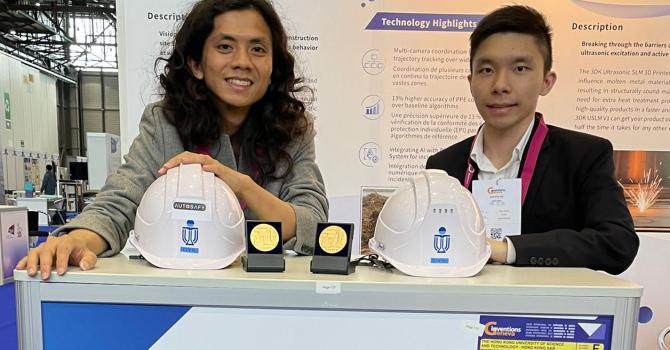CIVL ALUMNI AWARDED FOR INNOVATION IN HONG KONG INFECTION CONTROL CENTRE (HKICC) PROJECT
We are pleased to extend our congratulation to Ir Dr. ZOU Xiaokang, a PhD alumni from the Department of Civil and Environmental Engineering, who has won the HKIE Innovation Award 2021 Grand Prize (Category II — An Innovative Application of Engineering Theories). The honor has been bestowed on Dr. Zou along with colleagues Ir CHEUNG Chi Kin, Ir Barry M Y CHUNG and Ir JONG King Hei, in recognition of their contribution to building the North Lantau Hospital Hong Kong Infection Control Centre (HKICC), the world’s first all-MiC (Modular Integrated Construction) hospital, offering 816 isolation beds in negative-pressure rooms.
The North Lantau Hospital HKICC is an integral part of Hong Kong’s effort and response against the COVID-19 pandemic. In particular, it relieves the SAR’s healthcare system from the overwhelming demand for isolation beds in public hospitals during such an epidemic. The North Lantau Hospital HKICC covers 44,000 m2 in area and comprises multiple negative-pressure isolation wards.
In terms of engineering, the project of building the HKICC showcases such innovative technologies as not only Modular Integrated Construction (MiC) but also Live Model Coordination, Design for Manufacture and Assembly (DfMA), Building Information Modelling (BIM) and Digital Works Supervision System — the timely, excellent application of these start-of-the-art technologies is the very reason that Dr. Zou and team are commended with the award. Planning and constructing any hospital involves large-scale coordination and entails tremendous design complexity; nevertheless, despite such scope and complicacy, by incorporating the aforementioned technologies, the construction time of the HKICC was reduced remarkably — from what would have been more than four years (for a typical hospital built the old-fashioned way) to a mere four months — while keeping every aspect of construction in full compliance with Hong Kong building regulations and international healthcare standards. In addition to its much shorter construction time, the project also had a significantly reduced (by half) demand for manpower, and, perhaps more importantly, its carbon emissions was cut down by at least 50% as well.
On behalf of the Department, we would like to express our gratitude to Dr. Zou and his team for their all-out effort in the HKICC project, and for raising the benchmark and shaping the way that hospitals will be designed and built in the future.
HKIE Feature Story:
http://www.hkengineer.org.hk/issue/vol49-july_2021/feature_story/?id=13900




